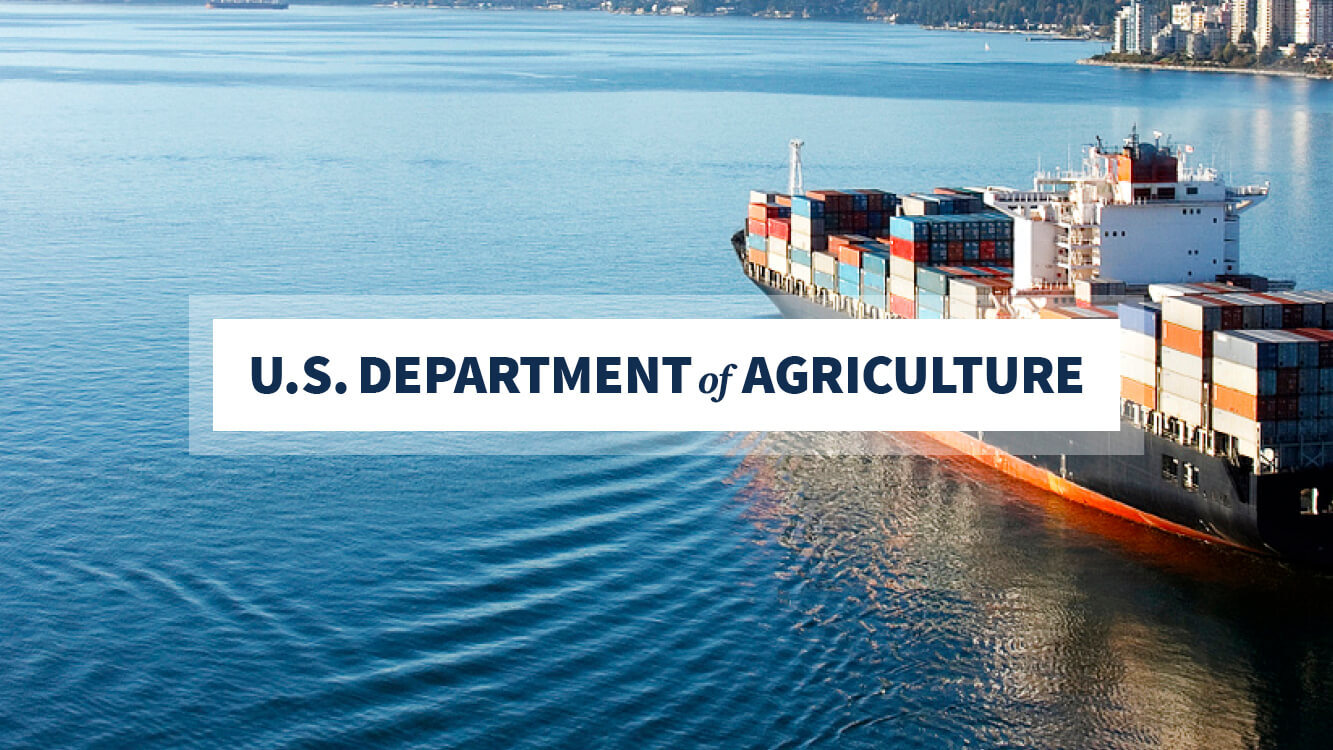Statement by Secretary Vilsack Regarding India’s Reduction In Tariffs on Agricultural Products
Statement by Secretary Vilsack Regarding India's Reduction In ... USDA.gov


U.S. Agriculture Secretary Welcomes India’s Tariff Reduction on U.S. Agricultural Products

WASHINGTON, Sept. 8, 2023 – U.S. Agriculture Secretary Tom Vilsack issued the following statement today in response to the announcement by the Office of the U.S. Trade Representative (USTR) that India has agreed to reduce tariffs on key U.S. agricultural products:
Introduction
U.S. Agriculture Secretary Tom Vilsack welcomes the recent announcement by the Office of the U.S. Trade Representative (USTR) regarding India’s agreement to reduce tariffs on important U.S. agricultural products. This development opens up new market opportunities for U.S. producers and exporters in India, the world’s most populous nation.
Emphasis on Sustainable Development Goals (SDGs)
The Biden-Harris Administration, through the United States Department of Agriculture (USDA) and USTR, aims to rebuild trust and strengthen relationships with global trading partners, including India. This aligns with the Sustainable Development Goals (SDGs), particularly Goal 17: Partnerships for the Goals, which emphasizes the importance of international cooperation and collaboration to achieve sustainable development.
Progress and Challenges
India’s decision to reduce tariffs on U.S. turkey, duck, cranberries, and blueberries is a positive step towards fair and equitable trade. It follows the recent lifting of India’s retaliatory tariffs on U.S. apples, chickpeas, lentils, almonds, and walnuts. However, there are still significant tariff and non-tariff barriers that hinder American agricultural products from accessing the Indian market.
President Biden’s Participation in G20 Leaders’ Summit
This announcement comes just before President Biden’s participation in the G20 leaders’ summit in New Delhi. It highlights the importance of trade relationships between the United States and India and sets the stage for further discussions on addressing trade barriers and strengthening the trade relationship.
Conclusion
U.S. Agriculture Secretary Tom Vilsack looks forward to working with Ambassador Tai to address the remaining barriers and enhance the trade relationship between the United States and India. By promoting fair and open trade, both countries can contribute to achieving the SDGs, particularly Goal 2: Zero Hunger, by ensuring access to safe, nutritious, and sustainable food for all.
#
USDA is an equal opportunity provider, employer, and lender.
SDGs, Targets, and Indicators
| SDGs | Targets | Indicators |
|---|---|---|
| SDG 2: Zero Hunger | Target 2.3: By 2030, double the agricultural productivity and incomes of small-scale food producers, in particular women, indigenous peoples, family farmers, pastoralists, and fishers, including through secure and equal access to land, other productive resources and inputs, knowledge, financial services, markets, and opportunities for value addition and non-farm employment. | Indicator 2.3.1: Volume of production per labor unit by classes of farming/pastoral/forestry enterprise size |
| SDG 8: Decent Work and Economic Growth | Target 8.3: Promote development-oriented policies that support productive activities, decent job creation, entrepreneurship, creativity, and innovation, and encourage the formalization and growth of micro-, small-, and medium-sized enterprises, including through access to financial services. | Indicator 8.3.1: Proportion of informal employment in non-agriculture employment, by sex |
| SDG 12: Responsible Consumption and Production | Target 12.2: By 2030, achieve the sustainable management and efficient use of natural resources. | Indicator 12.2.1: Material footprint, material footprint per capita, and material footprint per GDP |
| SDG 17: Partnerships for the Goals | Target 17.11: Significantly increase the exports of developing countries, in particular with a view to doubling the least developed countries’ share of global exports by 2020. | Indicator 17.11.1: Developing countries’ and least developed countries’ share of global exports |
1. Which SDGs are addressed or connected to the issues highlighted in the article?
SDG 2: Zero Hunger
The article discusses the reduction of tariffs on key U.S. agricultural products by India, which creates new market opportunities for U.S. producers and exporters. This is connected to SDG 2, which aims to achieve zero hunger by improving agricultural productivity and ensuring access to markets.
SDG 8: Decent Work and Economic Growth
The article mentions the focus on rebuilding trust and strengthening relationships with global trading partners, including India, to ensure fair access to export markets for U.S. agriculture. This is connected to SDG 8, which aims to promote decent work and economic growth through trade and partnerships.
SDG 12: Responsible Consumption and Production
The article highlights the need for sustainable management and efficient use of natural resources in achieving trade relationships and market access. This is connected to SDG 12, which aims to achieve responsible consumption and production patterns.
SDG 17: Partnerships for the Goals
The article mentions the efforts of USDA and USTR in working through the World Trade Organization and other venues to ensure that trading partners live up to their obligations. This is connected to SDG 17, which aims to promote partnerships for sustainable development.
2. What specific targets under those SDGs can be identified based on the article’s content?
Target 2.3: By 2030, double the agricultural productivity and incomes of small-scale food producers
The reduction of tariffs on U.S. agricultural products by India can contribute to increasing the incomes of small-scale food producers by providing new market opportunities.
Target 8.3: Promote development-oriented policies that support decent job creation and entrepreneurship
The focus on rebuilding trust and strengthening relationships with global trading partners, including India, can lead to the creation of decent jobs and entrepreneurship opportunities in the agricultural sector.
Target 12.2: By 2030, achieve the sustainable management and efficient use of natural resources
The article highlights the need for sustainable management and efficient use of natural resources in achieving fair access to export markets for U.S. agriculture.
Target 17.11: Significantly increase the exports of developing countries
The efforts of USDA and USTR in working through international venues like the World Trade Organization aim to increase exports and promote trade partnerships, which aligns with Target 17.11.
3. Are there any indicators mentioned or implied in the article that can be used to measure progress towards the identified targets?
The article does not explicitly mention any indicators. However, potential indicators that can be used to measure progress towards the identified targets include:
– Indicator 2.3.1: Volume of production per labor unit by classes of farming/pastoral/forestry enterprise size can measure the increase in agricultural productivity and incomes of small-scale food producers.
– Indicator 8.3.1: Proportion of informal employment in non-agriculture employment, by sex can measure the creation of decent jobs in the agricultural sector.
– Indicator 12.2.1: Material footprint, material footprint per capita, and material footprint per GDP can measure the progress in achieving sustainable management and efficient use of natural resources.
– Indicator 17.11.1: Developing countries’ and least developed countries’ share of global exports can measure the increase in exports of developing countries.
Overall, the article does not provide specific indicators, but these are potential indicators that can be used to measure progress towards the identified targets.
4. SDGs, Targets, and Indicators
| SDGs | Targets | Indicators |
|---|---|---|
| SDG 2: Zero Hunger | Target 2.3: By 2030, double the agricultural productivity and incomes of small-scale food producers, in particular women, indigenous peoples, family farmers, pastoralists, and fishers, including through secure and equal access to land, other productive resources and inputs, knowledge, financial services, markets, and opportunities for value addition and non-farm employment. | Indicator 2.3.1: Volume of production per labor unit by classes of farming/pastoral/forestry enterprise size |
| SDG 8: Decent Work and Economic Growth | Target 8.3: Promote development-oriented policies that support productive activities, decent job creation, entrepreneurship, creativity, and innovation, and encourage the formalization and growth of micro-, small-, and medium-sized enterprises, including
Behold! This splendid article springs forth from the wellspring of knowledge, shaped by a wondrous proprietary AI technology that delved into a vast ocean of data, illuminating the path towards the Sustainable Development Goals. Remember that all rights are reserved by SDG Investors LLC, empowering us to champion progress together. Source: usda.gov
Join us, as fellow seekers of change, on a transformative journey at https://sdgtalks.ai/welcome, where you can become a member and actively contribute to shaping a brighter future.
|








